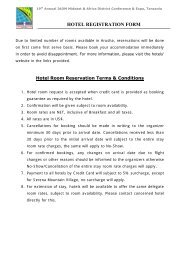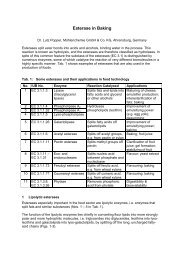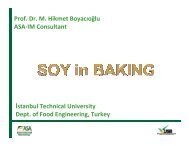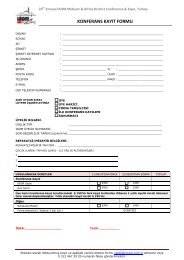Technical Session - Tech#-05 - US Wheat Associates
Technical Session - Tech#-05 - US Wheat Associates
Technical Session - Tech#-05 - US Wheat Associates
You also want an ePaper? Increase the reach of your titles
YUMPU automatically turns print PDFs into web optimized ePapers that Google loves.
Terminal Velocity – Wikipedia ®<br />
An object is moving at its terminal velocity if its speed is<br />
constant due to the restraining force exerted by the air<br />
A free-falling object achieves its terminal velocity when the<br />
downward force of gravity (F g ) equals the upward force of<br />
drag (F d ). This causes the net force on the object to be<br />
zero, resulting in an acceleration of zero.<br />
As the object accelerates (usually downwards due to<br />
gravity), the drag force acting on the object increases,<br />
causing the acceleration to decrease. At a particular speed,<br />
the drag force produced will equal the object's weight (mg).<br />
At this point the object ceases to accelerate altogether and<br />
continues falling at a constant speed called terminal<br />
velocity (also called settling velocity). Terminal velocity<br />
varies directly with the ratio of weight to drag. More drag<br />
means a lower terminal velocity, while increased weight<br />
means a higher terminal velocity.

















